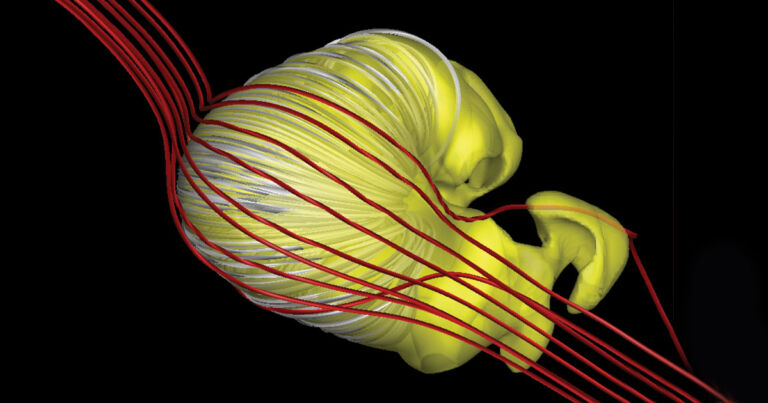Only two manmade objects have traveled beyond the far edges of the solar system: NASA’s Voyager 1 and Voyager 2.
Beyond the heliosphere, the bubble of space created by the Sun, lies the interstellar void of space between stellar systems in our galaxy.
For years, astronomers have suggested that the heliosphere is shaped like a comet, with a characteristically long tail that helps act like a shield that blocks incoming cosmic rays.
But according to new research, its shape could look far more peculiar than that: like a “deflated croissant,” according to a NASA statement. Less comet and more like a chewed up piece of gum, or maybe something vaguely biological from the movie “Annihilation.”
To construct the model, a team of astronomers took a closer look at data collected by NASA’s Interstellar Boundary Explorer (IBEX). The mission analyzed energetic neutral atoms as cosmic rays travel from the Sun and outwards towards the heliopause, the theoretical boundary past which solar winds can’t penetrate, some ten billion miles from Earth.
The team also considered data about charged particles being reflected towards the inner solar system, courtesy of NASA’s Cassini mission, as well as measurements from NASA’s New Horizons mission. Astronomers found that the further solar wind moved away from the Sun, it interacted with an increasing amount of material from interstellar space.
With all this data in hand, the team then got to work to come up with a 3D model of the heliosphere, as detailed in a paper published in the journal Nature Astronomy in March.
The result looks far more peculiar than the elegant comet-like shape from conventional models. Two jets shoot out of the…



